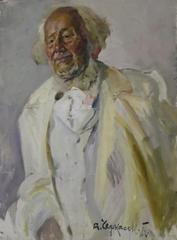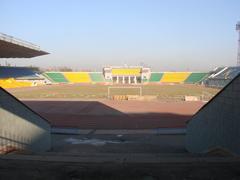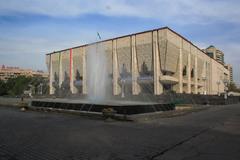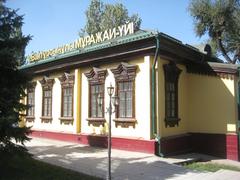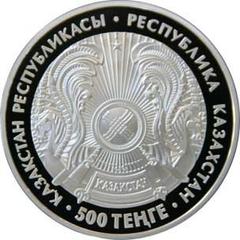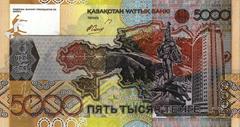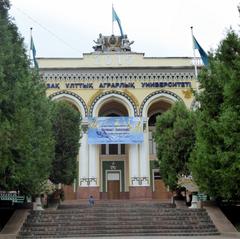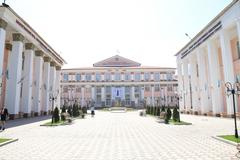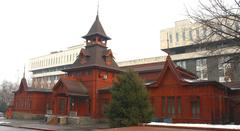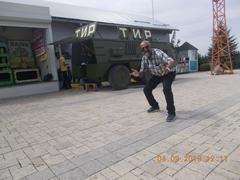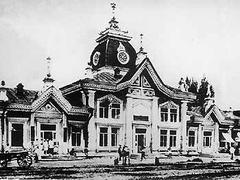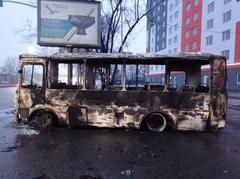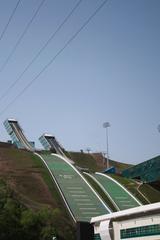Boralday Almaty, Kazakhstan: Visiting Hours, Tickets, and Historical Sites Guide
Date: 03/07/2025
Introduction
Situated on the northwestern outskirts of Almaty, Kazakhstan, the Boralday Archaeological Site offers a fascinating journey into the nomadic past of Central Asia. Known for its impressive burial mounds—or kurgans—Boralday is one of Kazakhstan’s most significant ancient necropolises, dating back to the Early Iron Age (10th century BCE to 3rd century CE). Closely linked to the Saka nomads (ancestors of the Scythians) and later the Usun culture, the site reflects the evolution and complexity of steppe societies over millennia.
Discovered during an aerial survey in 2006, Boralday has since emerged as a cornerstone of Kazakhstan’s archaeological research. The site not only reveals monumental tombs and intricate burial customs but also evidence of early long-distance trade, as seen in the discovery of Chinese silk and Persian carpets. Today, visitors can explore reconstructed kurgans, an open-air museum, and a landscape that continues to serve as a ceremonial center. Complementing Boralday, nearby attractions like the Issyk kurgan and the Museum of Almaty make Almaty a prime destination for those interested in Kazakhstan’s ancient heritage (Astana Times; Silk Road Adventures; welcome.kz).
Table of Contents
- Early Settlement and the Saka Nomads
- Discovery and Archaeological Significance
- Structure and Features of the Necropolis
- Cultural and Spiritual Importance
- Archaeological Research and Preservation
- Visiting Boralday: Hours, Tickets, and Accessibility
- Travel Tips and Nearby Attractions
- Visuals and Media
- Frequently Asked Questions (FAQ)
- Historical Timeline
- Local Travel and Practical Information
- Summary and Visitor Tips
- References
Early Settlement and the Saka Nomads
The earliest known inhabitants of the Boralday region were the Saka people, renowned for their nomadic lifestyle, horsemanship, and distinctive burial practices. Archaeological findings date the Saka presence to as early as the 10th century BCE, with the main necropolis constructed between the 6th and 3rd centuries BCE (Astana Times; Archaeolist). The 47 large burial mounds, some reaching 14 meters in height and over 100 meters in diameter, were reserved for elite warriors and leaders, signifying complex social structures (Into Far Lands).
Discovery and Archaeological Significance
Boralday’s ancient necropolis remained largely unknown until its accidental discovery in 2006 during a regional aerial mapping project (Astana Times). Subsequent excavations have uncovered remarkably well-preserved human remains, clothing, and grave goods—including imported Chinese silk and Persian carpets—demonstrating that the Saka engaged in long-distance trade well before the formal Silk Roads (Into Far Lands).
Structure and Features of the Necropolis
Boralday covers approximately 430 hectares and includes 47 large kurgans and over 200 smaller burial mounds. The largest mounds were built for Saka nobility, while smaller ones may have served later Usun elites (Archaeolist). Visitors can explore a reconstructed mound modeled after the famous Issyk “Golden Man” burial, complete with an interior display of funerary implements and artifacts (Astana Times).
Cultural and Spiritual Importance
Strategically located between the Bolshaya Almatinka and Boraldai rivers, the site served not just as a burial ground but also as a sacred landscape for ancestor worship and seasonal rites. The mounds symbolize enduring markers of ancestral memory and power, and Boralday has been listed on Kazakhstan’s national register of sacred objects. Efforts are ongoing to nominate it for UNESCO World Heritage status (Archaeolist; Astana Times).
Archaeological Research and Preservation
Excavations have yielded important artifacts, such as pottery, weapons, gold jewelry, and horse burials, highlighting the Saka’s wealth and beliefs. A reconstructed Saka dwelling is displayed on-site, and the area is managed by the Museum of Almaty, which aims to develop an open-air archaeological and ethnographic park. Ecological preservation is a guiding principle to maintain the site’s authenticity.
Visiting Boralday: Hours, Tickets, and Accessibility
- Visiting Hours: 9:00 AM – 6:00 PM daily
- Tickets: 500–800 KZT for adults, with discounts for students, seniors, and children; children under 7 typically enter free
- Purchase: Onsite at the visitor center; online ticketing may be available via the Museum of Almaty website (welcome.kz)
- Accessibility: The site is a 20–30 minute drive from central Almaty and accessible by taxi, private car, or public transport (buses #24, 33, 115a, 213 to the “Big Almaty Canal” stop). Paths are generally flat but may be uneven near some mounds; limited wheelchair access is available. Contact site management in advance for special accommodations.
Travel Tips and Nearby Attractions
- Best Time to Visit: Spring (April–June) and early autumn (September–October) offer mild weather and beautiful scenery (touristplaces.guide).
- Photography: The steppe landscape and ancient mounds are ideal for photos, especially at sunrise or sunset.
- Nearby Sites: Consider combining your visit with the Central State Museum of Kazakhstan, Issyk Burial Site, Medeu Skating Rink, and Almaty History Museum.
- Amenities: Restrooms and shaded rest areas are available. Bring water and snacks; limited food options are nearby.
Visuals and Media
On-site, visitors will find multilingual informational signage (Kazakh, Russian, English), panoramic maps, and artifact displays. Virtual tours and interactive content are accessible via the Museum of Almaty and official tourism websites.
Frequently Asked Questions (FAQ)
Q: What are Boralday’s visiting hours?
A: 9:00 AM to 6:00 PM daily.
Q: How much are tickets?
A: 500–800 KZT for adults, with discounts for children, students, and seniors.
Q: Is the site suitable for children?
A: Yes, but supervision is advised due to uneven terrain.
Q: Are guided tours available?
A: Yes, book onsite or in advance through the Museum of Almaty.
Q: Is Boralday accessible for wheelchair users?
A: Main paths are accessible, but some areas are uneven. Contact the site beforehand for specific needs.
Historical Timeline
- 10th century BCE: Saka nomads settle in the Almaty region.
- 6th–3rd centuries BCE: Construction and use of Boralday necropolis for elite Saka burials.
- Later centuries: Usun culture utilizes the necropolis.
- 2006: Accidental rediscovery during aerial surveys.
- 2010–2020s: Designation as a national sacred object and ongoing archaeological research; UNESCO nomination efforts (Astana Times; Archaeolist).
Local Travel and Practical Information
- Access: 20–30 minutes by car or taxi from Almaty; public buses available.
- Visa: Kazakhstan offers visa-free entry for over 70 countries; others can apply for an e-visa (Kashmir Observer).
- Currency: Kazakhstani Tenge (KZT). Cash is preferable in Boralday; ATMs are more common in Almaty.
- Language: Kazakh and Russian are widely spoken; some English in tourist areas.
- Safety: Standard precautions suffice. Bottled water is recommended.
Summary and Visitor Tips
Boralday is a premier destination for those seeking to understand Kazakhstan’s nomadic legacy. The site’s monumental mounds, reconstructed kurgans, and open-air museum offer immersive experiences, while its proximity to Almaty’s rich cultural scene makes it ideal for a day trip or extended stay. For the best experience:
- Check official hours and ticketing in advance.
- Book guided tours for deeper context.
- Dress for the weather and terrain.
- Use the Audiala app for interactive maps and visitor updates.
Engage respectfully with this sacred site, appreciating its significance in the history of the Eurasian steppe (Astana Times; Silk Road Adventures; welcome.kz).
References and Further Reading
- Astana Times – Boralday Saka Burial Mounds Welcome Tourists in Almaty
- Silk Road Adventures – Boralday Saka Burial Mounds
- Welcome.kz – Boralday Archaeological Complex Visitor Information
- Archaeolist – Boralday Archaeological Site Summary
- Into Far Lands – Explore Boralday Burial Mounds
- Tourist Places Guide – Boralday Travel Guide
- Kashmir Observer – Planning Your Trip to Almaty 2025
- ITIMaker – Almaty Itinerary
